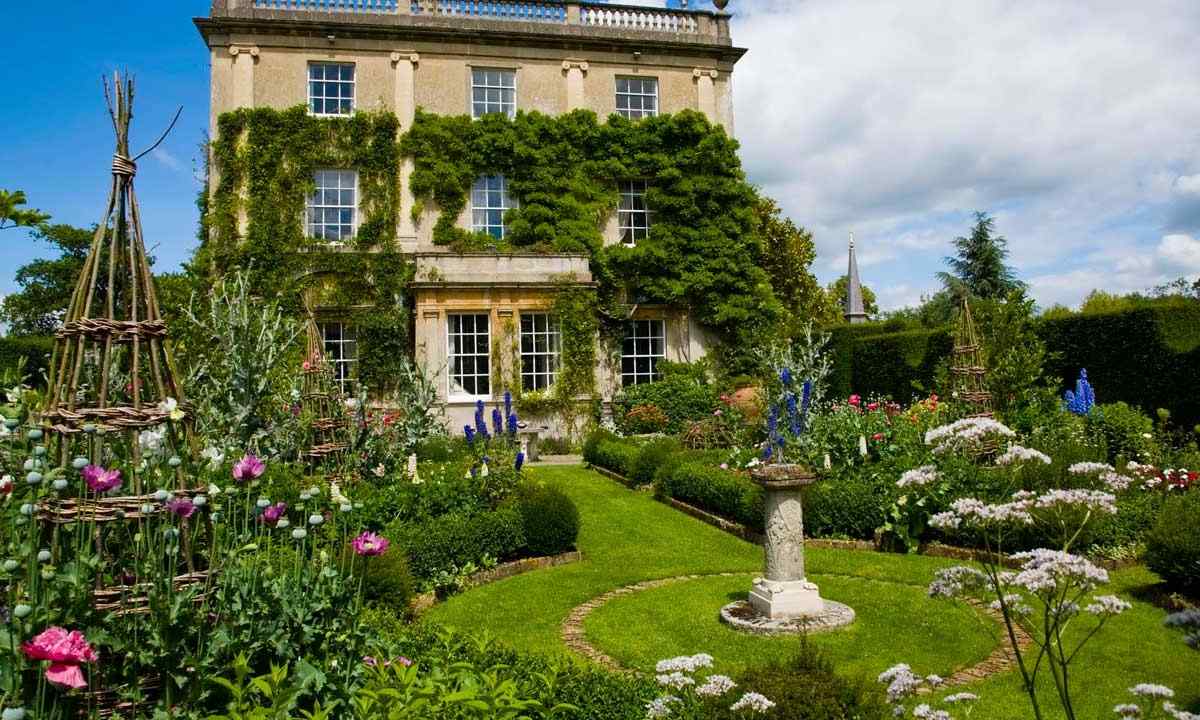The English landscape style in landscaping never gets out of fashion. The combination of carefully well-groomed lawns to magnificent thickets of the blossoming and dekorativnolistvenny bushes, climbers on lanes, shady old trees is characteristic of this direction. Such garden demands permanent care, but makes impression of the real wild wood with cozy clearings and abundance of flowers.
English garden: history and the general impressions
British are famous for the love for gardening. Even the smallest townhouses have well-groomed front gardens, and city mansions or country cottages just are buried in verdure. At the same time residents of Great Britain do not suffer violence over the nature, their ideal – to approach the best natural samples, slightly having corrected them and having modernized. The main difference from regular French gardens – lack of accurate forms. The hairstyle of trees is carried out very delicately, taking into account their natural development.
The first gardens in landscape style have appeared at the end of the 18th century. They were created by immigrants from Holland, planting the flowers and bushes characteristic of local flora. Such approach has been justified – in crude climate with small amount of sunny days the exotic plants took root badly. However some trees nevertheless adapted and today are successfully grown up in the English gardens. Striking example – effective red maple.
Eventually gardens were slightly transformed, fruit-trees were added to traditional plants, selectors removed grades of the flowers which are ideally fitting into park landscapes. Plants were complemented with the park sculptures from stone imitating ancient artifacts. Development of the English garden was influenced by the cultures of China, Germany, Japan.
The modern site in the English style is planned taking into account features of landscape. Most effectively gardens with small hillocks, hills, glades look. Old trees are cut in exceptional cases, quite often died trunk becomes support for powerful lianas. Paths become twisting, in garden cozy chamber corners are projected. Very often organically enter stream or small pond in landscape – natural or artificial.
Basis of the English style – accurately cut lawn. Alternative option – meadow with small plants which are also exposed to regular hairstyle. Lawns are framed with bush or magnificent thickets of wild-growing grassy plants. Various constructions carefully mask greens. Before fence plant number of bushes, grids of gazebos make out ivy or pletisty roses.
The best plants for the English gardens
At selection of plants preference is given to perennials. Flowers land so that buds were dismissed continuously, from the beginning of spring till late fall. Among the most popular plants there are kamnelomk, primroses, honeysuckle, astilb, lilies of the valley, forget-me-nots, alissuma, mignonette, fuchsias, tuberous begonias.
Obligatory component of the English gardens – various lianas. Most often land various ivies, wild grapes, clematises, the curling roses. Roses in general are very popular with British, rosaries take the places of honor. Preference is given to magnificent pomponovidny and bowl-shaped grades, for example, to roses from David Austin's collection.
The blossoming variety will be added by spicy and officinal herbs: mint, melissa, anise, basil, valerian, sage, marjoram. They give pleasant aroma and serve as background for large buds. Choose plants with interesting form of krone and magnificent foliage from trees and bushes: willows, pendent birches, thujas, boxes, juniper, heather. Often plant also fruit-trees: apple-trees, cherries, cornel.
Color registration is very important. The gardens in the English style which are created in other countries can be rather bright, but residents of Great Britain prefer pastel vague gamma. In such style huge palace parks and tiny front gardens in the English remote place are made out.

